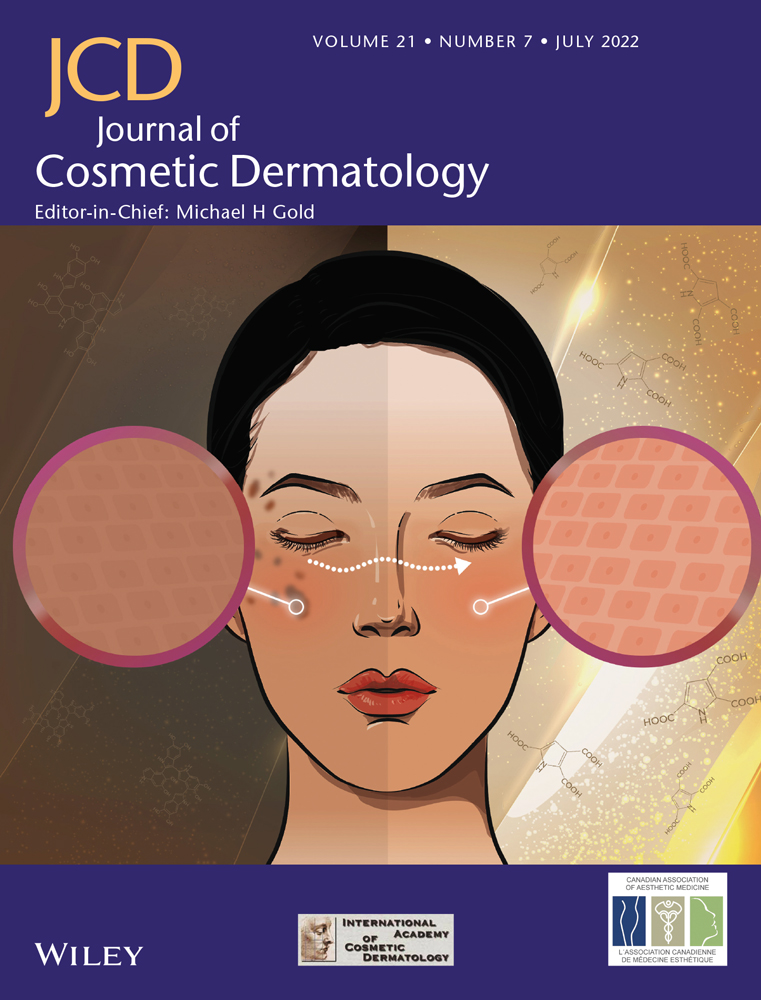Interaction between body weight status and spicy food consumption on the risk of rosacea: A multi-central, hospital-based, case-control study
Ben Wang and Xin Huang are contributed equally to this work.
Funding information
This work was supported by grants from the National Natural Science Foundation of China (81974480, 81703149, 81602784)
Abstract
Background
No researches about the interaction among the risk factors for rosacea were conducted. Some studies prompted obesity and spicy food may have some common pathways.
Aims
To clarify the relationship between body mass index (BMI) and rosacea, and explore the interaction between BMI and spicy food consumption in rosacea.
Methods
This hospital-based case-control study enrolled 1347 rosacea patients and 1290 healthy subjects. The demographic data and clinical data were collected. The association between BMI and rosacea, and the relative excess risk due to interaction of BMI and spicy food consumption was calculated.
Results
No interaction was found between underweight, overweight/obesity, and spicy food consumption with regard to the risk of rosacea, mild-to-moderate rosacea, papulopustular rosacea (PPR), or phymatous rosacea (PhR). And underweight and overweight/obesity were not significant associated with rosacea, mild-to-moderate rosacea, PPR, or PhR (p > 0.05). However, spicy food consumption was significantly interacted with underweight on the risk of erythematotelangiectatic rosacea (ETR), and with overweight/obesity on the risk of severe rosacea. Underweight was associated with increased risk of ETR (adjusted odds ratio [aOR] = 1.91, 95% confidence interval [CI]: 1.21, 3.03) among spicy no users, but the association was attenuated into insignificant level when mixed with spicy food factor (p > 0.05). Among moderated spicy food consumers, overweight/obesity was associated with decreased risk of severe rosacea (aOR = 0.70, 95% CI: 0.50, 0.98), but overweight/obesity was insignificant associated with severe rosacea among spicy no users and heavy spicy food consumers (p > 0.05).
Conclusions
Body weight status alone was not significantly associated with rosacea, but the interaction between body weight status and spicy food consumption is involved in the rosacea.
CONFLICT OF INTEREST
The authors declare no conflicts of interest.
Open Research
DATA AVAILABILITY STATEMENT
The data used to support the findings of this study are available from the corresponding author upon request.




